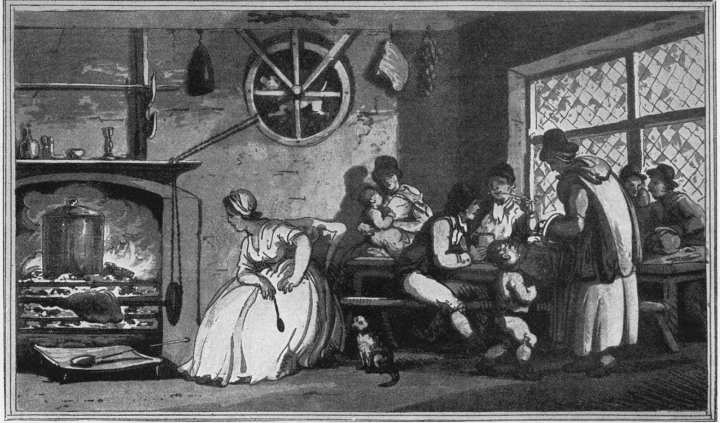I can't really decide what to make of the Foundling Hospital. Founded in 1741, it was the first real organization designed for housing abandoned children (providing a venue for babies to be abandoned
other than the church doorsteps). There have been quite a few books published on it during the last hundred years or so, but I haven't run across anything that takes the food eaten there into account in any detail. So what was the story?
In browsing the minute books, which I've been doing over the last couple of weeks, I often run across little details (food related or otherwise) that warm my heart, such as:
-- "The School Master requested the usual allowance of one guinea for children's toys" (1800)
-- "On the 17th of October yearly [the children] have a holliday of roast beef and plumb pudding for dinner" (1758)
-- "Ordered that the children have a holliday on the first fine day of next week" (1797)
The consensus among historians is that the diet here was generally better than that of the parish workhouses, but, obviously, the provisions seem a lot more meagre than a lot of the material I've looked at. The first Sub-committee minute book stipulates that
"the diet allowed ... be plain and simple, a small broth pottage and milk, meat and vegetables alternately, their bread coarse and their drink water."
Sounds pretty bare-bones. But check out this diet table; I found it in a book of miscellaneous documents dated between 1755 and 1762.
 |
| Notice how "dinner" was constantly subject to revision |
Of course, then as now, there was no free lunch, and the children did everything from making clothing and nets to working in the kitchen or garden be rendered, as the minute books put it, "more useful to the Publick" the goal ultimately being to apprentice them out somewhere. There were also dire consequences for misbehaving; I've run across several occasions where children were locked up for a week and fed only bread and water.
Most distressing, however, is to find that the minute books are punctuated by things like this:
 |
Bill of Fare for The Trustees Anniversary Dinner: May, 1787
On the menu: "Tonderoons de Veau" "Duckling Roast" and "Mock Turtle" |
Very suspicious. Very suspicious indeed. But can we blame these guys? The minute books seem to indicate that the hospital relied on these kinds of charity dinners to solicit funding, not unlike the celebrity-studded fundraisers we have today. (Handel's orotorios were also apparently big money-makers for the hospital.)
Dietaries and Bills of Fare are very good at showing what people were eating. But how were they eating? What did dining mean in this institution? That's up next.



